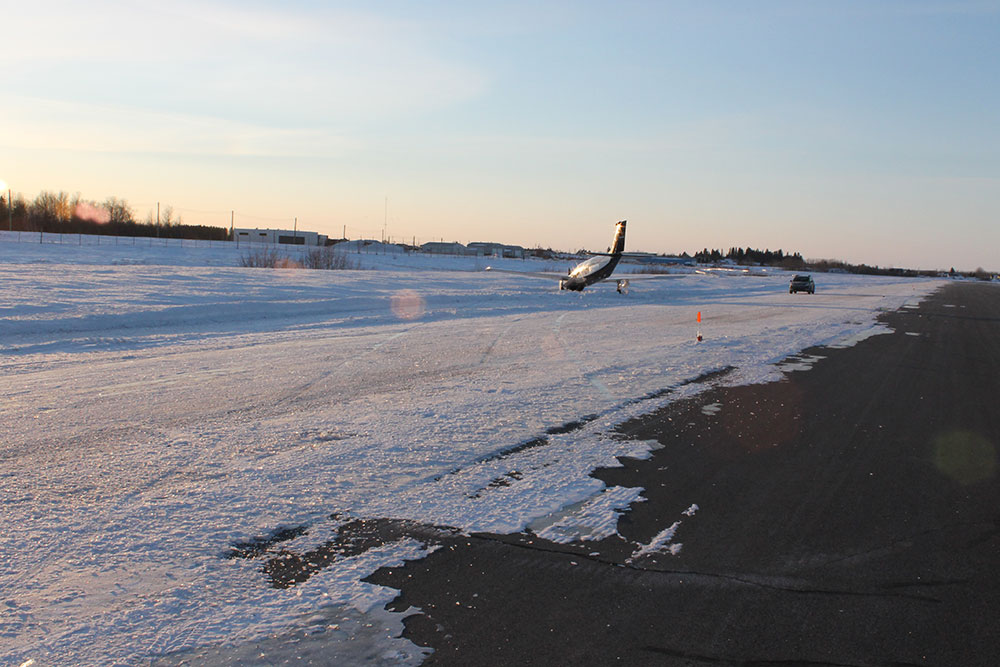Runway excursion
Piper Malibu Mirage PA-46-350P, C-GSSA
Alma, Quebec
The occurrence
On 23 January 2014, the privately operated Piper PA-46-350P Malibu Mirage (registration C-GSSA, serial number 4636518) departed Montréal International (Mirabel) Airport, Quebec, at 0848 Eastern Standard Time, for Alma, Quebec, with 1 pilot and 1 passenger on board. The flight was uneventful, and the aircraft landed at 1002 on Runway 31. As the nose wheel contacted the runway, directional control was lost. The aircraft veered left and departed the runway surface 400 feet after the loss of control. The aircraft came to a stop about 100 feet from the runway edge in a compacted snow bank, approximately 2200 feet from the threshold of Runway 31. There were no injuries. The aircraft was substantially damaged. There was no fire. The impact forces were not enough to activate the 406 megahertz emergency locator transmitter.
Media materials
News release
Undetected fatigue crack in landing gear system contributed to the January 2014 runway excursion of an aircraft in Alma, Quebec
Read the news release
Investigation information
Download high-resolution photos from the TSB Flickr page.
Class of investigation
This is a class 3 investigation. These investigations analyze a small number of safety issues, and may result in recommendations. Class 3 investigations are generally completed within 450 days. For more information, see the Policy on Occurrence Classification.
TSB investigation process
There are 3 phases to a TSB investigation
- Field phase: a team of investigators examines the occurrence site and wreckage, interviews witnesses and collects pertinent information.
- Examination and analysis phase: the TSB reviews pertinent records, tests components of the wreckage in the lab, determines the sequence of events and identifies safety deficiencies. When safety deficiencies are suspected or confirmed, the TSB advises the appropriate authority without waiting until publication of the final report.
- Report phase: a confidential draft report is approved by the Board and sent to persons and corporations who are directly concerned by the report. They then have the opportunity to dispute or correct information they believe to be incorrect. The Board considers all representations before approving the final report, which is subsequently released to the public.
For more information, see our Investigation process page.
The TSB is an independent agency that investigates air, marine, pipeline, and rail transportation occurrences. Its sole aim is the advancement of transportation safety. It is not the function of the Board to assign fault or determine civil or criminal liability.
